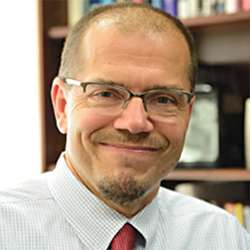
Processing Your Payment
Please do not leave this page until complete. This can take a few moments.
-
News
-
Editions
-
- Lists
-
Viewpoints
-
HBJ Events
-
Event Info
- 2024 Economic Outlook Webinar Presented by: NBT Bank
- Best Places to Work in Connecticut 2024
- Top 25 Women In Business Awards 2024
- Connecticut's Family Business Awards 2024
- What's Your Story? A Small Business Giveaway 2024 Presented By: Torrington Savings Bank
- 40 Under Forty Awards 2024
- C-Suite and Lifetime Achievement Awards 2024
- Connecticut's Health Care Heroes Awards 2024
-
-
Business Calendar
-
Custom Content
- News
-
Editions
View Digital Editions
Biweekly Issues
- April 29, 2024
- April 15, 2024
- April 1, 2024
- March 18, 2024
- March 4, 2024
- February 19, 2024
- February 5, 2024
- January 22, 2024
- January 8, 2024
- + More
Special Editions
- Lists
- Viewpoints
-
HBJ Events
Event Info
- View all Events
- 2024 Economic Outlook Webinar Presented by: NBT Bank
- Best Places to Work in Connecticut 2024
- Top 25 Women In Business Awards 2024
- Connecticut's Family Business Awards 2024
- What's Your Story? A Small Business Giveaway 2024 Presented By: Torrington Savings Bank
- 40 Under Forty Awards 2024
- C-Suite and Lifetime Achievement Awards 2024
- Connecticut's Health Care Heroes Awards 2024
Award Honorees
- Business Calendar
- Custom Content
Unique college co-location deal in CT could serve as national model
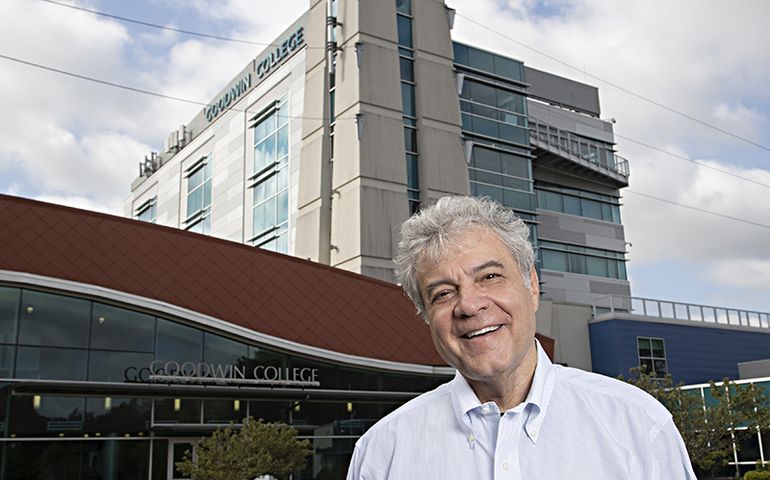 HBJ Photo | Stever Laschever
Goodwin University President Mark Scheinberg.
HBJ Photo | Stever Laschever
Goodwin University President Mark Scheinberg.
More Information
After a merger deal with Vermont’s Marlboro College fell through last year, the financially troubled University of Bridgeport was on the hunt for a much-needed partner.
Rather than one interested institution, UB President Stephen Healey found three.
Under a memorandum of understanding signed in June, Goodwin University of East Hartford, Hamden-based Paier College of Art, and Sacred Heart University in Fairfield agreed to co-locate programs on UB’s campus and purchase all of the school’s property and programs.
They also agreed to honor credits students earn at each other’s schools.
College presidents participating in the partnership say they see opportunity in a new urban location that gives them the ability to cost share and make more courses available to students.

The partnership still requires numerous approvals from accreditors, which could take more than a year, but if and when it is greenlit, the University of Bridgeport brand will go away, Healey said.
“I think what you get here is fairly unique,” he said. “It’s not exactly a consortium, but it’s a university park.”
The partnership comes at an especially precarious time for higher education institutions in New England, with more than half of them experiencing declining enrollment between 2008 and 2018, according to a study by the Federal Reserve Bank of Boston.
There are 71 financially vulnerable New England colleges, the study concluded, because they have both declining enrollment and meager endowments.
In its most recently available financial disclosure, the University of Bridgeport posted an $8.7-million loss in fiscal 2018, while Goodwin and Sacred Heart posted surpluses of $16.2 million and $41.4 million, respectively, according to National Center for Education Statistics.
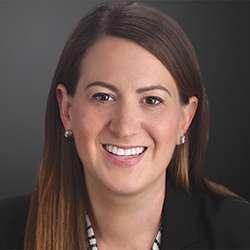
The higher-ed industry has been given a negative outlook rating in each of the last three years, said Jessica Wood, director of the education sector at ratings agency Standard & Poor’s.
COVID-19 has only added to the industry’s financial challenges, forcing colleges to close campuses last spring, costing them tens of millions of dollars in lost revenue from housing, dining and other services. Institutions likely won’t be able to recoup all that money this fall, as most will allow fewer students to live on-campus in an effort to maintain social distancing.
Most schools are currently looking for cost-savings opportunities, and agreements between institutions to honor each others’ credits are nothing new, Wood said. But having three separate institutions physically locate programs on the same campus to share facilities, costs and credits is different. And other schools will be watching to see how it goes.
“In the current environment, and [even] pre-COVID, schools have been looking for ways to think creatively from a revenue standpoint,” Wood said.
Economies of scale
The financial terms of the deal between Goodwin, Paier, Sacred Heart and UB have not been released, and all parties signed a nondisclosure agreement, but Goodwin University bought up the lion’s share of the programs and property, with the rest split between Paier and Sacred Heart, according to Goodwin President Mark Scheinberg.
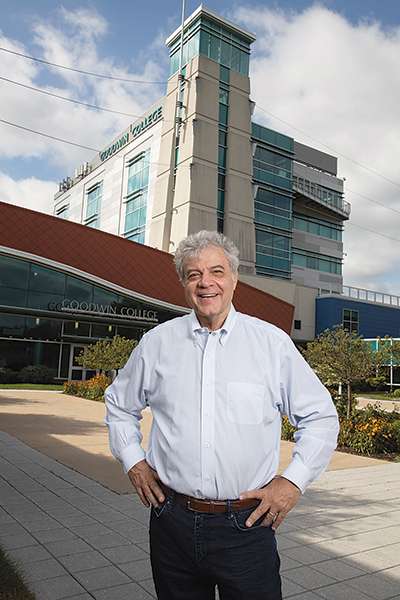
Sacred Heart bought three buildings and UB’s postgraduate education and engineering programs, along with its chiropractic and nutrition certificate programs.
Paier, a 74-year-old Hamden for-profit art school with a fall, 2018 enrollment of 83 students, will buy five academic programs in the design and communications areas.
Scheinberg, a main driver behind the deal, said he thinks Goodwin will start moving business and education programs onto UB’s campus next spring. Talks between the schools began a few months ago, and the partnership benefits them in multiple ways, he said.
If each school only has to buy and maintain some buildings on campus (including libraries and cafeterias) but students from all three can use those facilities, everyone saves money, Scheinberg said. Plus, once Goodwin buys UB’s academic programs, it will offer those and its current slate of courses to students on both its flagship East Hartford campus and the new Bridgeport location.
“Goodwin has a number of programs that are wildly successful in East Hartford,” including its nursing and manufacturing courses, said Scheinberg, whose school enrolled about 3,500 students in 2019 and generally focuses on adult and professional continuing education. “We have been looking for years to run some of those programs in a satellite fashion. Suddenly we’re going to be able to export our product to other campuses, and that will make us stronger.”

Sacred Heart’s interest in the deal lies in the ability to enhance its current offerings, and the affinity the school has with the city of Bridgeport, which is just across the border from Sacred Heart’s Fairfield campus, said university President John Petillo.
The liberal arts university that enrolls about 9,000 students bought three of UB’s buildings in the deal, Petillo said. While the credit-sharing setup allows more choices for students, Petillo also pointed out that UB’s campus includes a lot of undeveloped land. In the future, the schools could build apartments and amenities, and eventually transform the campus into an urban university, à la New York University (though he acknowledges it might sound a bit lofty).
Sacred Heart isn’t the only school to think in these terms, said Wood of S&P. When Boston University absorbed the now-defunct Wheelock College in Boston, much of the motivation came from BU’s desire to pick up valuable real estate in the city’s posh Fenway neighborhood, Wood said. The deal also allowed Boston University to expand its education program.
“I think there’s definitely something to be said for partnerships or agreements that find a way to share that excellence,” Wood said. “I think that can help demand.”
Gaining approval
Right now the concept’s largest hurdle is receiving approval from regional accreditors for the credit-sharing arrangement and the sale of programs to the three schools, which is crucial to the deal going through, Scheinberg said.
In order for the shared campus concept to work, the relatively unusual academic setup must be approved by the New England Commission of Higher Education (NECHE), which also must approve the transfer of each program. In addition to NECHE, there are dozens of accreditors for education in specific fields (i.e. nursing, engineering, etc.) that use different standards and timelines in their approval processes, Scheinberg said.
However, if and when regulators approve the venture, Scheinberg believes the cost-savings and expanded course offerings for all parties will make it a model for other schools looking to compete — or just survive — in a historically difficult financial time in the higher education industry.
“People are trying to find a way to better operate institutions at a better price point,” Scheinberg said. “You can’t keep raising tuition — there’s no money for it to come from.”
A glance at the co-locating colleges
Goodwin University
Students enrolled: 3,397*
Annual revenue: $82,057,000**
Change in net assets: $16.2M
Endowment value: $10.7M
Paier College of Art
Students enrolled: 83*
Annual revenue: $989,875**
Change in net assets: $110,530 loss
Sacred Heart University
Students enrolled: 8,958*
Annual revenue: $262.3M**
Change in net assets: $41.4M
Endowment value: $167.4M
University of Bridgeport
Students enrolled: 5,485*
Annual revenue: $98M**
Change in net assets: $8.7M loss
Endowment value: $34 million
*All enrollment numbers as of fall, 2018.
**All revenue, change in assets and endowment values as of fiscal 2018.
Source: National Center for Education Statistics
Related Content

2022 Giving Guide
This special edition informs and connects businesses with nonprofit organizations that are aligned with what they care about. Each nonprofit profile provides a crisp snapshot of the organization’s mission, goals, area of service, giving and volunteer opportunities and board leadership.
Learn more
Subscribe
Hartford Business Journal provides the top coverage of news, trends, data, politics and personalities of the area’s business community. Get the news and information you need from the award-winning writers at HBJ. Don’t miss out - subscribe today.
Subscribe
2024 Book of Lists
Delivering Vital Marketplace Content and Context to Senior Decision Makers Throughout Greater Hartford and the State ... All Year Long!
Read Here-
2022 Giving Guide
This special edition informs and connects businesses with nonprofit organizations that are aligned with what they care about. Each nonprofit profile provides a crisp snapshot of the organization’s mission, goals, area of service, giving and volunteer opportunities and board leadership.
-
Subscribe
Hartford Business Journal provides the top coverage of news, trends, data, politics and personalities of the area’s business community. Get the news and information you need from the award-winning writers at HBJ. Don’t miss out - subscribe today.
-
2024 Book of Lists
Delivering Vital Marketplace Content and Context to Senior Decision Makers Throughout Greater Hartford and the State ... All Year Long!
ABOUT
ADVERTISE
NEW ENGLAND BUSINESS MEDIA SITES
No articles left
Get access now
In order to use this feature, we need some information from you. You can also login or register for a free account.
By clicking submit you are agreeing to our cookie usage and Privacy Policy
Already have an account? Login
Already have an account? Login
Want to create an account? Register
Get access now
In order to use this feature, we need some information from you. You can also login or register for a free account.
By clicking submit you are agreeing to our cookie usage and Privacy Policy
Already have an account? Login
Already have an account? Login
Want to create an account? Register






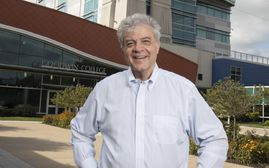


0 Comments